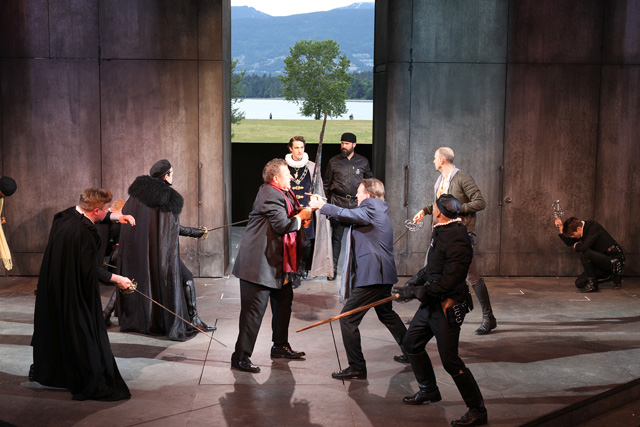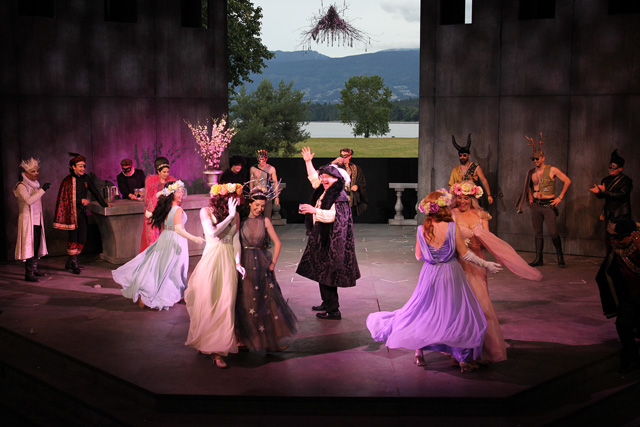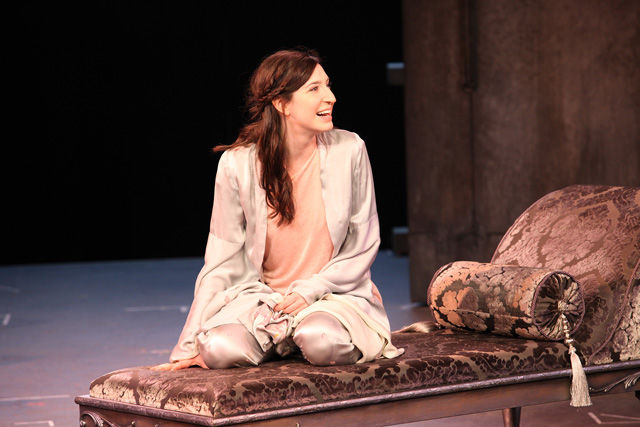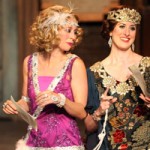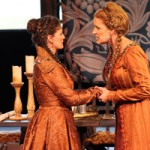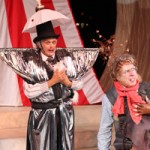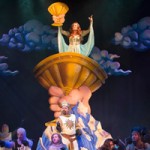A longtime fan of Shakespeare, I’ve seen each of his plays numerous times. And every year, Bard on the Beach succeeds in staging the old classics in innovative and inviting ways, especially true for this 27th season opener: the timeless Romeo and Juliet, its prologue recited by Bard Artistic Director Christopher Gaze.
Undoubtedly one of Shakespeare’s most-performed and best-loved plays, Romeo and Juliet adaptations have gone futuristic-punk (Baz Luhrmann, 1996), pop-art homoerotic (Studio 58, 2015) and interactive Twittersphere (Royal Shakespeare Company, 2010).
The head-scratching question for any capable director: How do you refresh a tale without a surprise ending? Director Kim Collier tickles audiences with her classic adaptation by focusing on the story’s execution rather than its outcome.
Collier fully utilizes the full genius of her production team to unfold Romeo and Juliet like a dreamscape against the glorious backdrop of Vanier Park.
From the moment audiences enter the Bard tent, Brian Lind’s enthralling music lingers in the air, undulating softly or wildly with each unique character. Romeo and Juliet is a play of extreme contrasts: passionate hate against passionate love, and somber dark against sparkling light.
The lovers both speak of light when referencing each other but their family rivalry casts a darkness that consumes them both. Lighting designer Gerald King deftly manipulates light to alter the mood on the stage and creates separate worlds that only the audience can observe simultaneously.
When Romeo and Juliet first catch sight of one other, they weave slowly amongst jubilant dancers, ethereal and glowing in their own solitary universe.
When Tybalt Capulet (Anton Lipovetsky) recognizes Romeo at the ball, his white rage follows him like a fiery orb, intruding into the world of the dancers and the lovers.
In a similarly surreal scene, choreographer Valerie Easton directs the Capulet household into a flurry of activity around a deathlike Juliet who lies unmoving in the middle of the stage, forever separate from their existence.
This omniscience is afforded an audience who already know the outcome of this doomed love story. The shimmery moonlight that bathes both lovers during the famous balcony scene suspends reality and is only shattered by the shrill beckoning of Juliet’s nurse. The light is both haunting and eerie, sustaining hope yet dangling fate.
The term star crossed was first coined in the prologue of Romeo and Juliet. Nancy Bryant’s radiant costumes crystallize this idea by incorporating stars into the outfits of both lovers.
Romeo’s golden star-crown matches Juliet’s silver star-crown; Romeo’s star-embossed doublet pairs off with Juliet’s starry gown. While these outfits reinforce their bond they also foreshadow that their fate is sealed unfavourably by the stars.
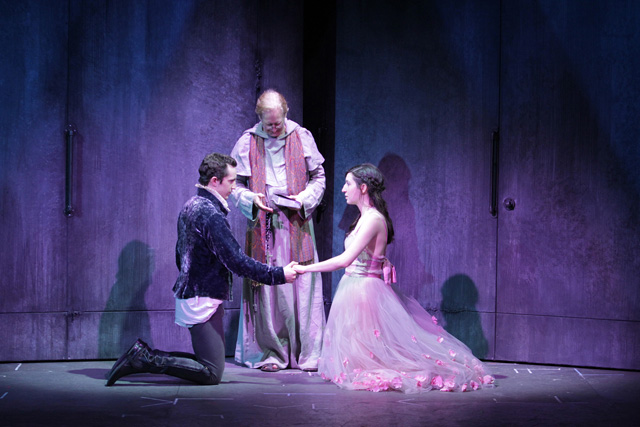
[Andrew Chown, Scott Bellis, Hailey Gillis]
Bryant uses rich and distinct colour palettes to adorn the heads of the two warring houses: blues for the Montagues and reds for the Capulets.
The opening scene resembles a hockey brawl until Commissioner Bettman, or in Romeo and Juliet’s case, Prince Escalus (Victor Dolhai) breaks up the fight.
The opposing team captains are immediately recognizable however the players (or Montague/Capulet family members) aren’t because they are dressed in neutrals. This may have been intended to convey that the families are similar in more ways than they care to admit. Sadly, the great hatred from their old rivalries will thwart the newly discovered great joy of their only offspring.
At first glance, Pam Johnson’s bleak, concrete set appears imposing and unmovable. However, there is amazing nimbleness in the way actors are able to manipulate the towering structures into romantic interior and exterior scenes.
The injection of modern effects such as balloons, headphones, sunglasses and beer cans into the classical scenery is distracting but conforms to the dream-like context. As in a vivid dream, there may be elements that make no sense and the mind grasps to interpret them. Before the brain can do so, the dream has turned into a nightmare and the anachronistic goods are tossed aside.
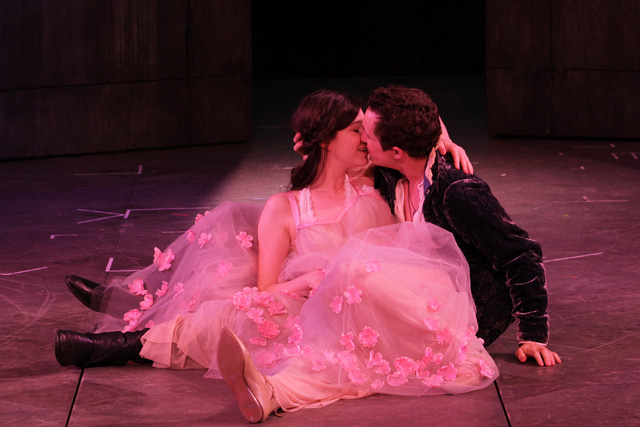
[Hailey Gillis, Andrew Chown]
Collier makes marvelous choices for the starring roles of Romeo and Juliet. Andrew Chown and Hailey Gillis display exceptional chemistry and respect towards the script and to each other. It will come as no surprise that they’ll break hearts and provoke tears nightly.
Chown exudes the ardor and angst of a brash teenage Romeo while Gillis’ tender innocence and exuberant loyalty betray Juliet’s mere 14 years. The pair expose all the irrational emotions associated with first love, but in manner both delicate and guileless.
Against these two remarkable “stars”, Ben Elliott and Andrew McNee provide ample comedic appeal during Act I and II as thoughtful Benvolio and hotheaded, witty Mercutio. The turning point in Act III is triggered by Mercutio’s death as he repeatedly curses “A plague o’ both your houses!” He refuses to accept that his fate was ordained by the stars, but was instead a consequence of human action.
Bard on the Beach’s production of Romeo and Juliet returns to romantic roots with fresh direction that begs for a different outcome. If only Friar Laurence ran a bit faster; if only Juliet woke up sooner; if only Lord Capulet was less strict.
Collier’s vision asks whether the heartrending tragedy might have been avoided. As a collective community, could hatred be put aside to allow love in? It’s a relevant question in any era but especially so in today’s uncertain times. Shakespeare’s answer is yes, as the Montague and Capulet families reconcile over the lifeless bodies of their children. I hope the bard is right.
Directed by Kim Collier, Romeo and Juliet continues at Bard on the Beach’s BMO Mainstage through September 23. Photos by David Blue.
